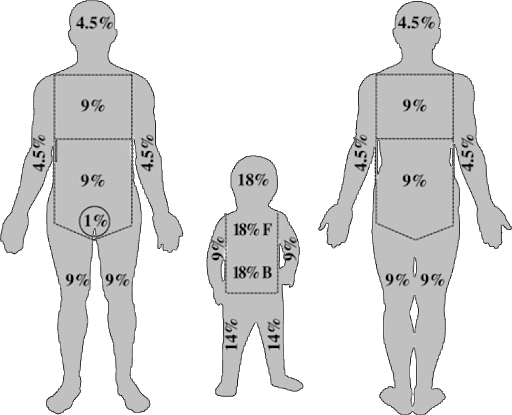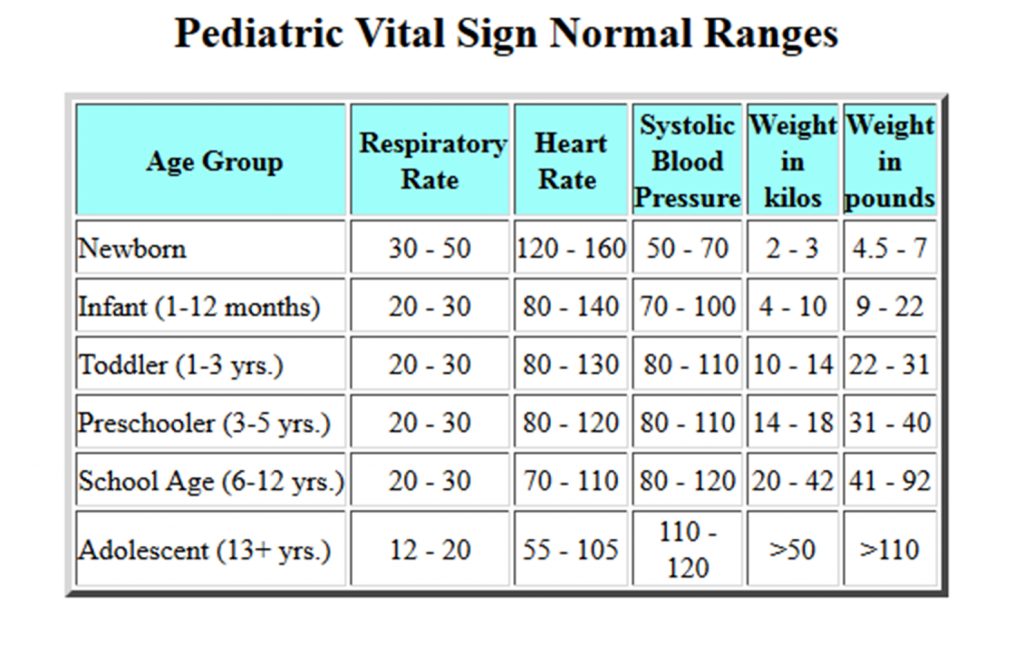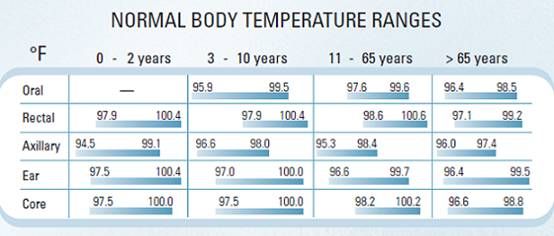Newborns, Infants, and Toddlers
Published (updated: ).

Newborns actually drop about 5 to 10 percent of their initial body weight in the first week of life. Within a few minutes of birth, the neonatal pulse is usually 30 – 40 beats per minute slower; likewise, the neonatal respiratory rate normally drops to under 40 breaths a minute. The decrease in breaths per minute continue through until adulthood and is due to increasing tidal volume which usually begins at 6 – 8 ml/kg and increases to as high as 10 ml/kg. Irrespective to age, the normal temperature is between 98 to 100 degrees Fahrenheit. Neonatal blood pressure is normally around 70mmHg but will rise to 90 mmHg within the first year. Newborns and infants share many common anatomical differences from the other age groups in that their head is large in comparison to their body. Further, their neck is not strong enough to control their giant head. The trachea of the newborn is always narrow, less stable and more easily obstructed than toddlers. For this reason ensuring that the neck is always supported is a critical skill to possess when handling the newborn and infant. Assuring the neck is maintained in a neutral position (neither flexed nor extended) helps to keep the airway from bending in a way that would obstruct the infant airway. It is for this reason that when newborns and infants are put into a supine position, padding is applied under the shoulders to ensure that the neck remains in a neutral position.
What It Takes To Survive Being Evicted From The Birth Canal

Transitioning from the uterine to extrauterine world is challenging for any newborn. It takes a very flexible (and compressible) person to be delivered through a vagina. Compared to adults (or even toddlers), the newborn/infant airway is narrower and less stable (support the neck). Infants are primarily nose breathers, lung tissue is more fragile and prone to trauma from pressure (namely from positive pressure ventilation). When the infant has problems breathing, the accessory muscles of respiration are immature and susceptible to early fatigue (infants breathe primarily from their diaphragm). Physiologically speaking the deck is stacked against the infant, leading to rapid heat and fluid loss. During infancy and into early adulthood, the infant must transition from passive immunity (immunity gained from the mother) to active immunity (immunity gained from the infants’ own immune system).
The nervous system, still developing from stem cells demonstrate well designed reflexes for the extrauterine world. The infant will possess a coordinated suck and gag reflex.
When an infant’s lips and mouth area are touched, the mouth opens and suckling or sucking movements begin. As liquid moves into the mouth, the tongue immediately moves it to the back of the mouth for swallowing. This reflex facilitates feeding from the breast or bottle but not from a spoon or cup. This reflex is seen from birth to about 4 months.

The infant gags when any object, such as a spoon or a piece of solid food, is placed way back in the mouth; the object is then propelled forward on the tongue. This reflex helps to protect an infant from swallowing inappropriate food or objects that could cause choking. This reflex is one reason for delaying the introduction of complementary foods until 4 to 6 months of age. This reflex diminishes by 4 months, but is retained to some extent in adults. Further, arms and legs flex equally with agitation. To see the the Moro reflex, the child will be placed face up on a soft, padded surface. The head is gently lifted with enough support to just begin to remove the body weight from the pad. (Note: The infant’s body should not be lifted off the pad, only the weight removed). The head is then released suddenly, allowed to fall backward for a moment, but quickly supported again (not allowed to bang on the padding). The normal response is for the baby to have a startled look. The baby’s arms should move sideways with the palms up and the thumbs flexed. The baby may cry for a minute. As the reflex ends, the infant draws its arms back to the body, elbows flexed, and then relaxes.

As one can see from the chart above, normal vital signs vary with age. As the newborn (birth to 30 days) ages, respirations and pulse progressively get slower while systolic blood pressure becomes higher. Physiologically, these changes are associated with body surface area to weight. This ratio is seen in nature where smaller animals tend to have faster metabolisms than larger animals. As the newborn eventually grows into an adolescent, the body surface area to weight ratio decreases.
Vitals Signs Changes Over Time

Once the infant grows into an early adult (age 20 – 40) the heart rate averages 60 beats per minute, respirations 12 – 20 breaths a minute and blood pressure 120/70. As the adult reaches middle adulthood (age 41 – 60) these numbers change a little with a heart rate of 70 beats per minute, respirations a little faster at 16 – 20 breaths per minute and a slightly higher blood pressure, 120/80 (good luck finding a patient that calls 911 with a blood pressure that normal). As the middle aged person gets older, it is common to expect changes in vision and hearing. Further, the middle aged person frequently worries about their cardiovascular health as well as cancer. As people get older, they often find it harder to manage their weight. In the late 40’s and early 50’s, many women experience menopause (as she is no longer producing estrogen and progesterone in the same manner she did when she was younger).
How the Infant Grows To Become An Adult
As the infant becomes a toddler (12 months), the pulmonary system will undergo tremendous growth. The number and reach of bronchioles and alveoli will increase. As the passive immunity (immunity passed down from the mother) expires, the immune system is continually challenged making the toddler susceptible to minor respiratory and gastrointestinal infections. The brain grows exponentially. When the neonate is delivered, the size of the brain is 25% of the size of an adult. In just 12 months, the infants’ brain will be 90% of it’s adult weight. As the brain increases in size, the toddler develops basic motor skills that will allow them to walk effortlessly. Fine motor skills take longer to develop, usually marked by the ability to legibly write on paper by the time the infant is 8 years old. As the infant gets older and is more physically active, he or she will experience tremendous increase in muscle mass and bone density.
Another development milestone is the ability to use a toilet. Having developed the ability to control their bladder by the time the infant reaches 12 to 15 months and psychologically ready between 18 and 30 months; typically takes about 28 months. By the time our infant reaches 36 months, the basics of language are mastered and subject to further refinement throughout childhood. Logically, the concept of cause and effect are understood between 18 and 24 months. Separation anxiety usually manifests between 6 to 36 months. By the time the toddler is 36 months old, they are able to play simple games and follow basic rules, some even begin to display competitiveness.
